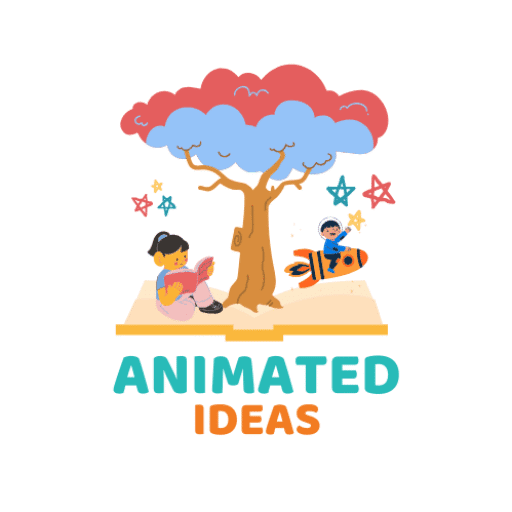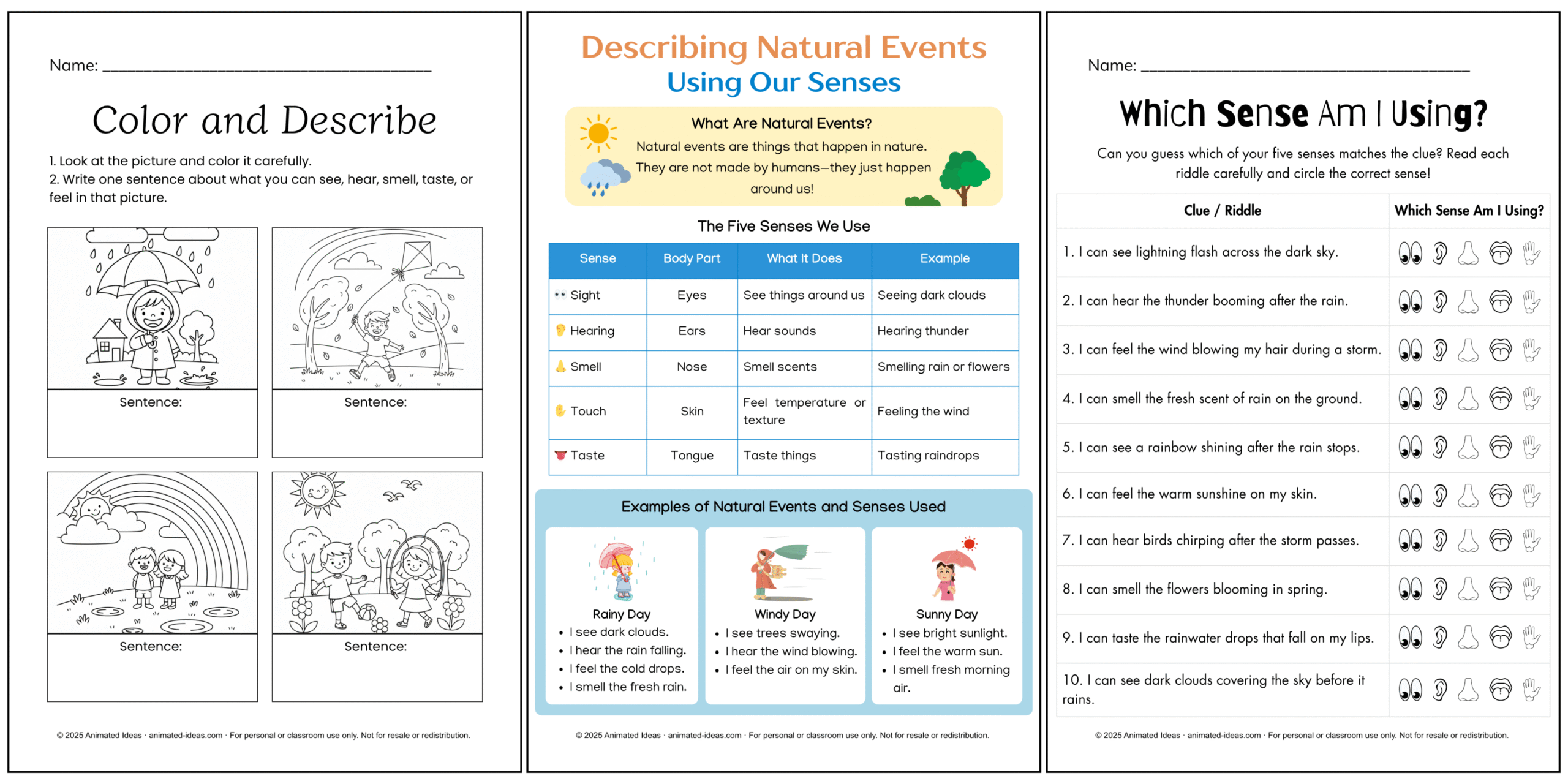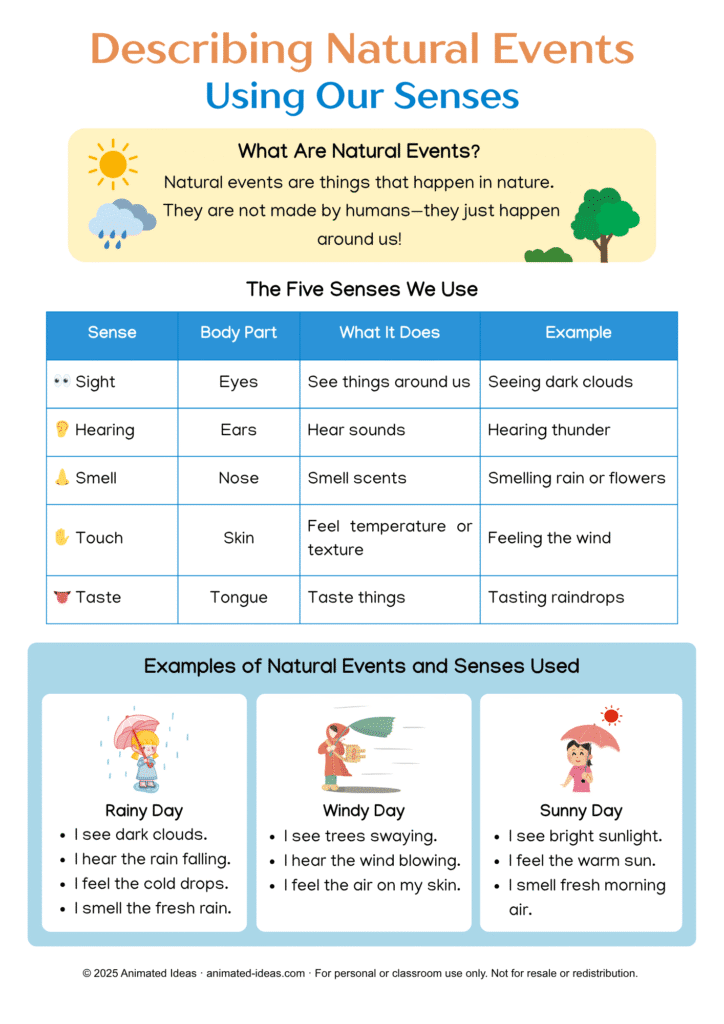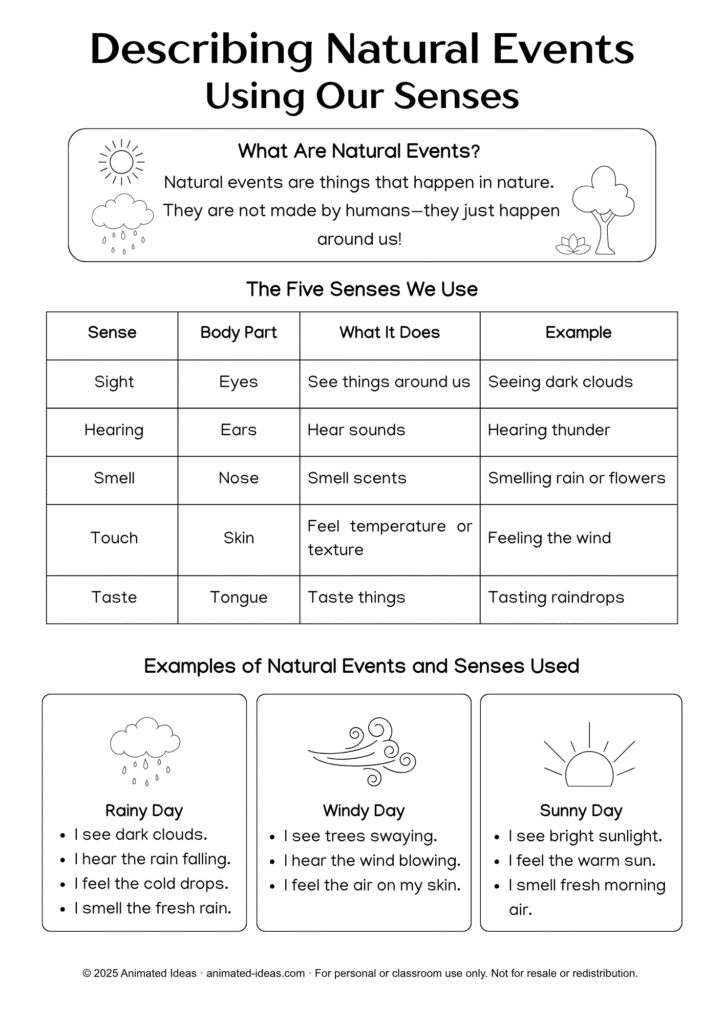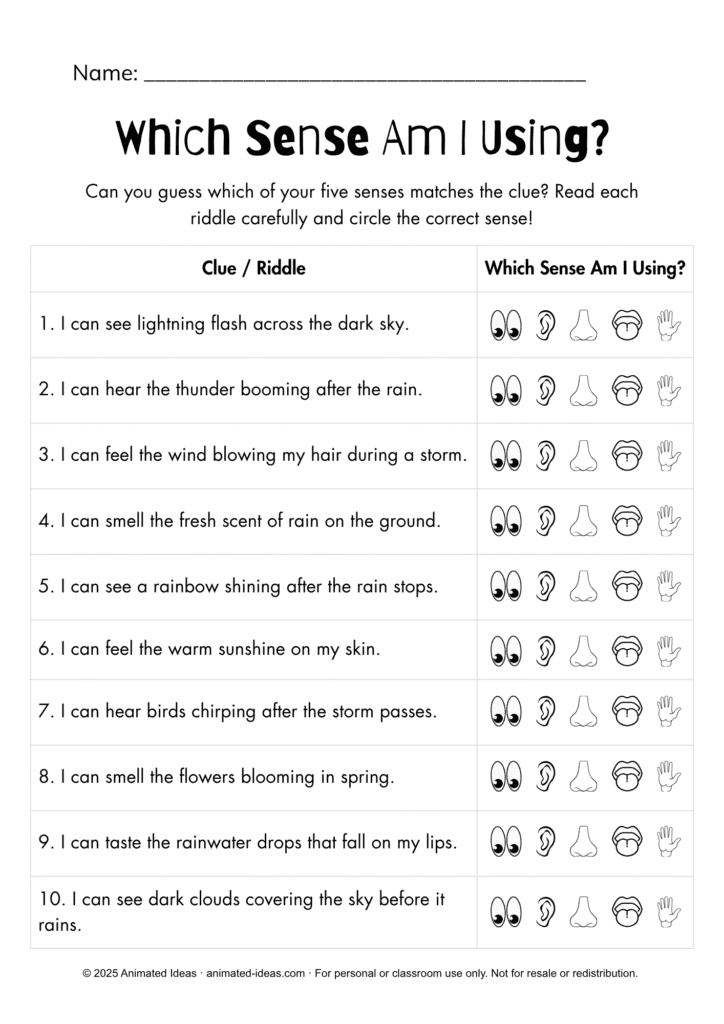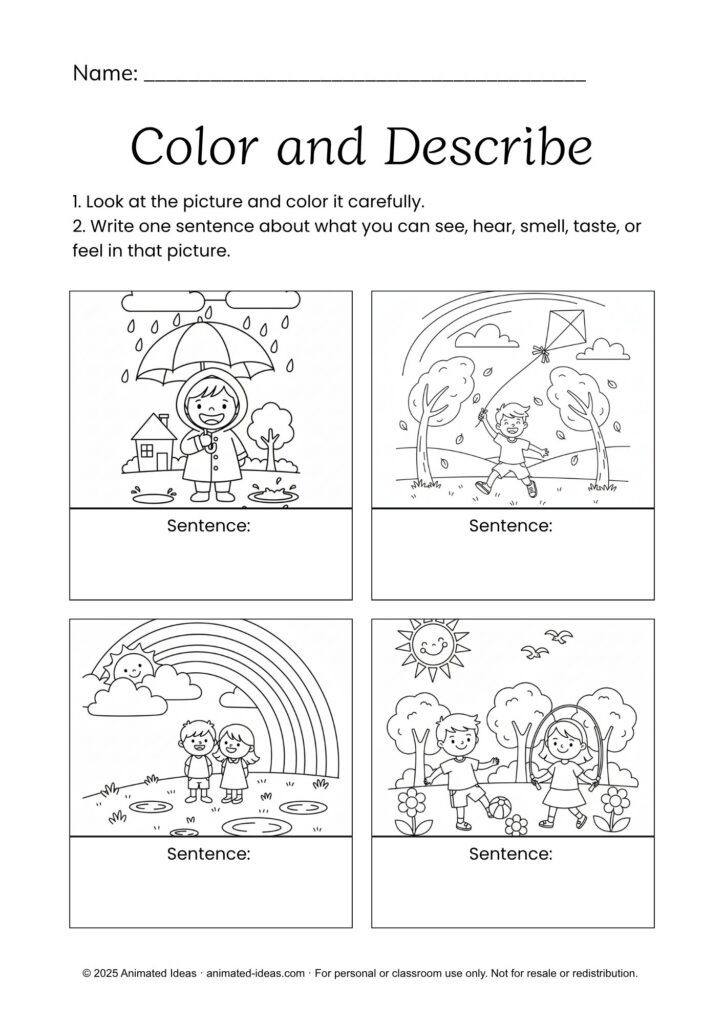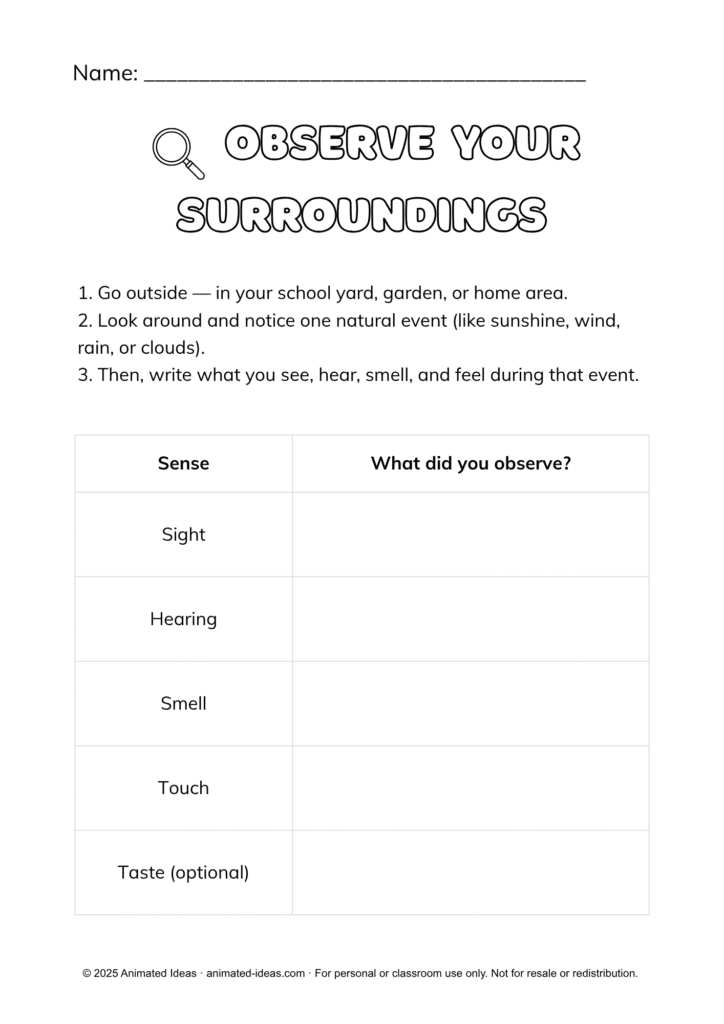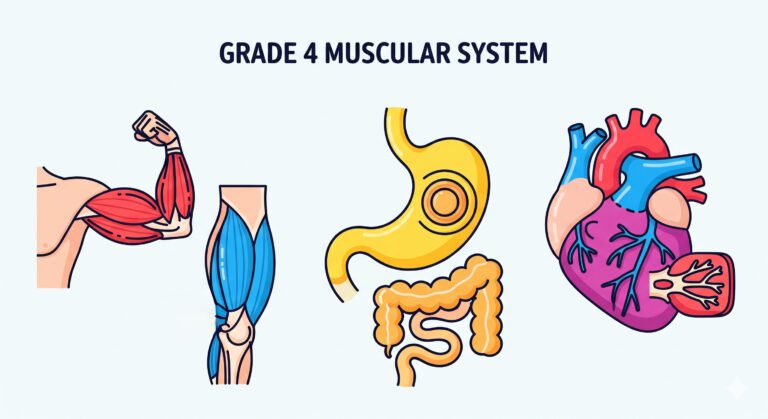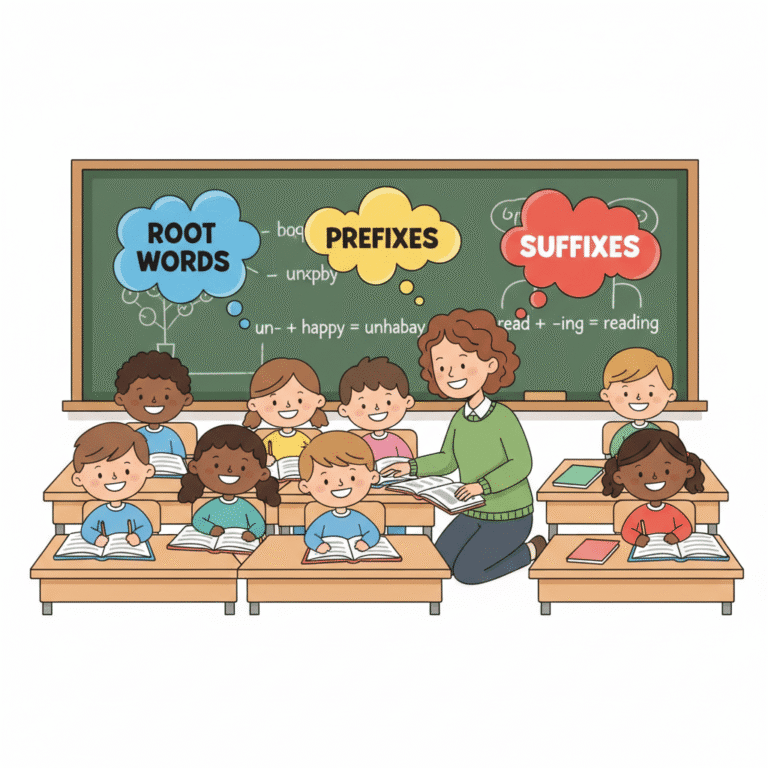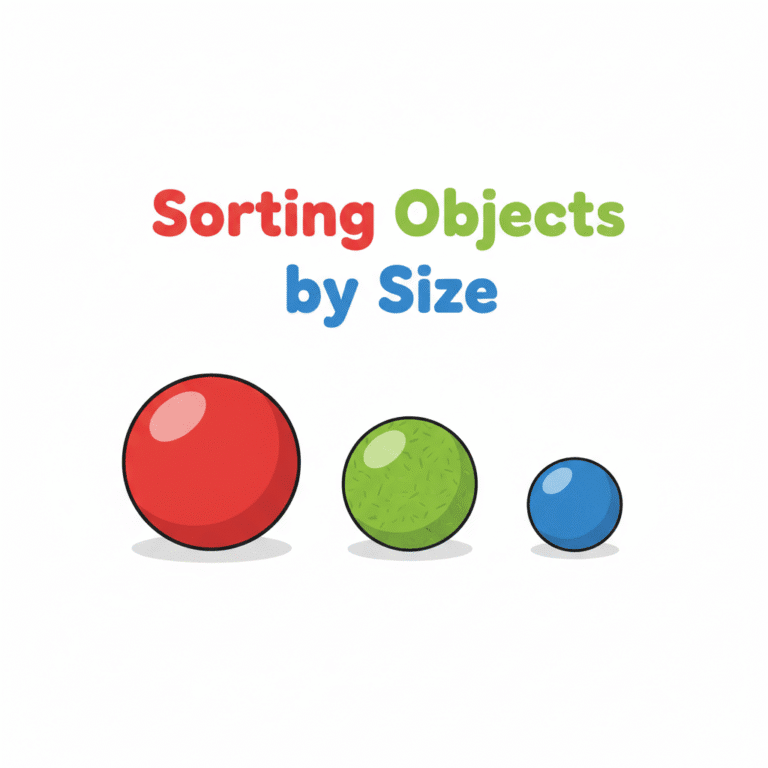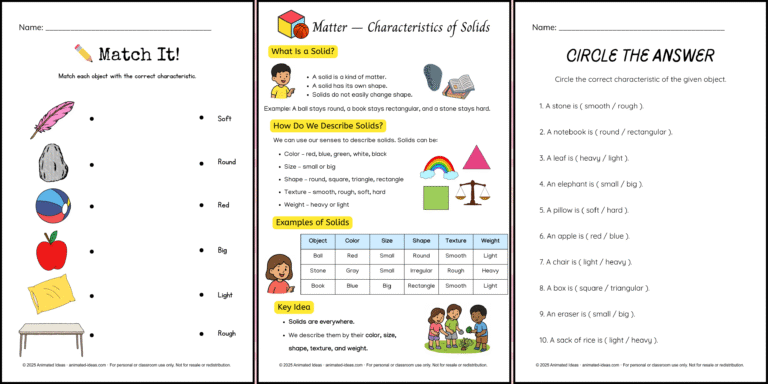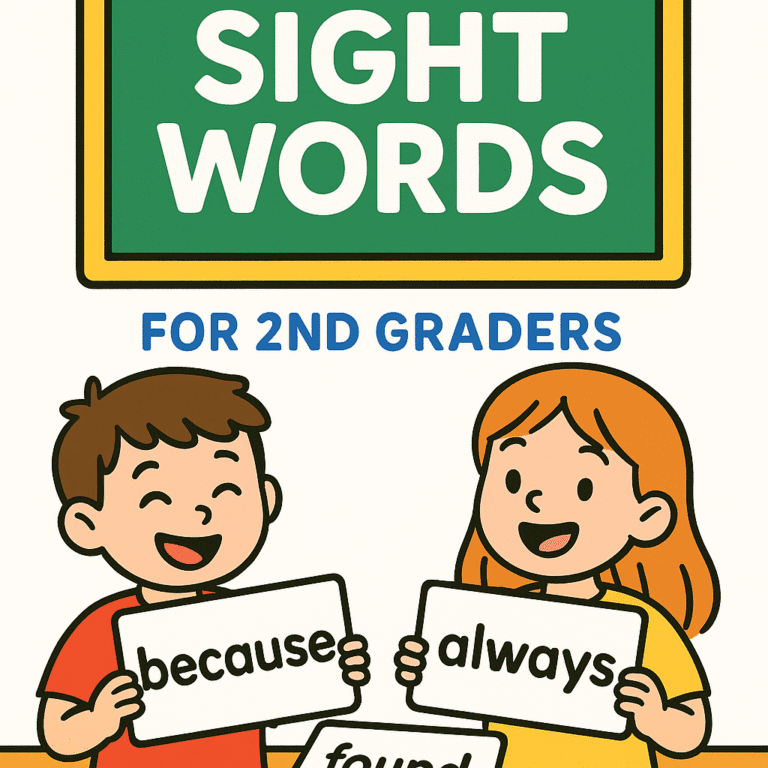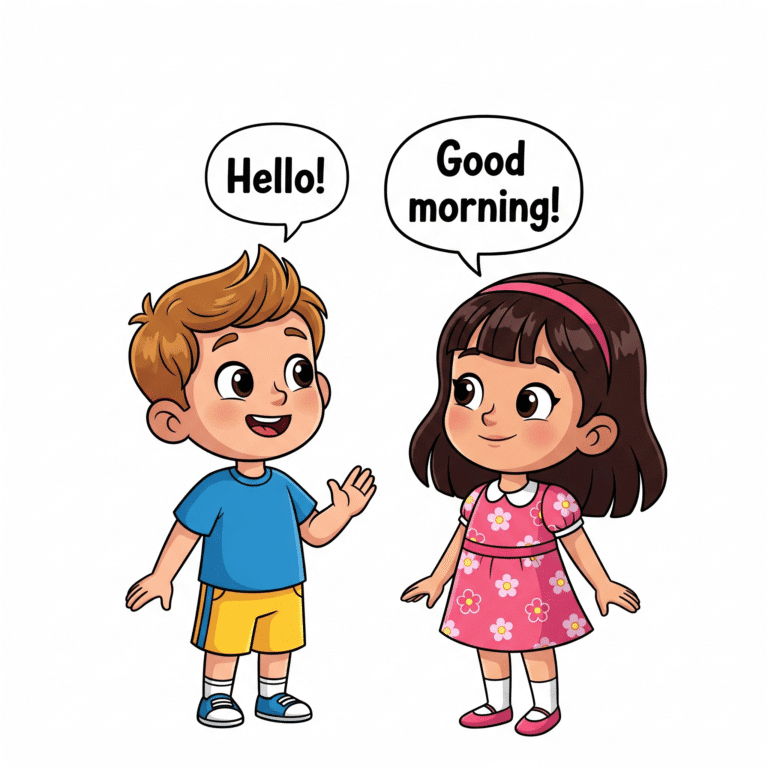Describing Natural Events With Our Senses
Describing Natural Events With Our Senses
What You Will Learn
Every day, we experience many things happening around us—like the rain falling, the wind blowing, or the sun shining. In this lesson, we will learn about describing natural events with our senses. By using sight, hearing, smell, touch, and taste, we can understand the world around us better. This Grade 3 Science lesson will help you observe nature carefully and describe what you experience through your five senses.
Let’s Begin!
🌈 Look Around You
Every day, natural events happen in our surroundings.
You can see the sun shining, rain falling, wind blowing, and clouds moving across the sky.
These are examples of natural events that we can observe and describe using our senses.
What Are Natural Events?
Natural events are happenings that occur in nature.
They are not made by humans but happen naturally around us.
Examples of natural events:
🌧️ Rain falling from the clouds
🌞 The sun rising and setting
🌪️ Strong winds blowing
🌈 A rainbow appearing after rain
🌊 Waves moving at the beach
🌱 A plant growing from a seed
Using Our Senses to Observe Natural Events
We can use our five senses to describe what we observe in nature.
| Sense | Body Part Used | What It Helps Us Do | Example in Nature |
|---|---|---|---|
| Sight 👀 | Eyes | See what is happening | Seeing dark clouds before it rains |
| Hearing 👂 | Ears | Hear different sounds | Hearing thunder during a storm |
| Smell 👃 | Nose | Notice scents | Smelling fresh rain or flowers |
| Touch ✋ | Skin | Feel textures and temperatures | Feeling the wind on your face |
| Taste 👅 | Tongue | Taste things | Tasting rainwater (though we should not drink too much of it!) |
Let’s Observe!
Example 1: Rainfall
When it rains, you can:
- See dark clouds and falling raindrops.
- Hear the sound of rain hitting the roof.
- Smell the fresh scent of rain.
- Feel the coldness of the water.
These are all observations using your senses.
Example 2: A Windy Day
When the wind blows strongly, you can:
- See the trees swaying and leaves flying.
- Hear the whistling sound of the wind.
- Feel the cool air on your skin.
Example 3: A Sunny Morning
During a sunny day, you can:
- See the bright sun shining.
- Feel the warmth of sunlight on your skin.
- Smell the fresh morning air.
Why Do We Describe Natural Events?
Describing natural events helps us:
- Understand what is happening in nature
- Know how the weather changes
- Learn how science explains these events
When we observe carefully, we become more aware of our environment and learn how to take care of nature.
Science Connection
Each natural event has a scientific explanation:
| Natural Event | Scientific Explanation |
|---|---|
| Rain | Water vapor in the air cools and becomes droplets that fall to Earth. |
| Wind | Air moves from one place to another due to temperature changes. |
| Rainbow | Light from the sun passes through water droplets and bends, creating colors. |
| Waves | Energy from the wind moves through the water. |
Let’s Remember
- Natural events happen in nature and are not made by humans.
- We can describe these events by using our five senses.
- Science helps explain why and how these natural events happen.
Recommended Resources from Animated Ideas
Story Sequencing Guide for Grade 4 – Learn How to Order Events
Lesson Guides
Worksheets
For updates and free resources, follow us:
📺 YouTube: Animated Ideas
📘 Facebook Page: Animated Ideas
📌 Pinterest: Animated Ideas
